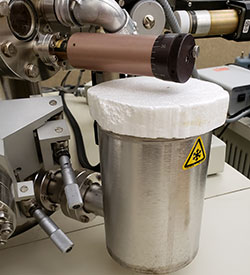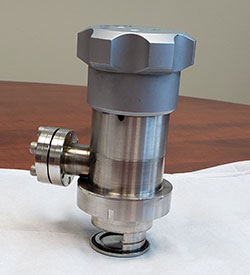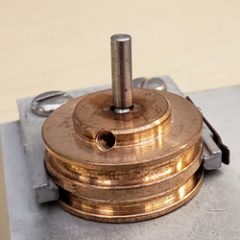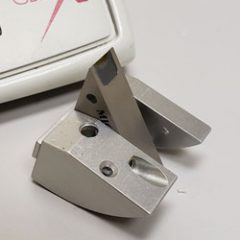Specialized Sample Preparation
Home » Services » Materials Testing & Analysis » Specialized Sample Preparation
EAG has a range of specialized sample preparation and sample handling techniques that can significantly improve the likelihood of success in an analytical investigation. A number of these are detailed as follows:
Hot and Cold Stage TOF-SIMS Sample Preparation
Samples with high levels of moisture or even liquids can be cooled down to -80 to -100°C for analysis. Typical applications are for surfaces that may change due to exposure to UHV conditions or high energy radiation, for example contact lenses. Samples can also be heated up to 800°C to examine potential changes in surface chemistry as a function of temperature.

Hot and Cold Stage XPS Sample Preparation
Samples can be cooled to near liquid nitrogen temperatures for analysis. This is useful for samples that are not solids at room temperature or contain volatile components that may be pumped off in a UHV vacuum system. This sample stage can also maintain samples in a hydrated state during analysis: sublimation of the water from the frozen surface is done in-situ, and the sample can then be analyzed. Samples can also be heated up to 450°C to examine potential changes in surface chemistry as a function of temperature.

Inert Gas Sample Vacuum Transfer for XPS and Auger
With EAG-provided hardware, the sample can be mounted under an inert gas environment. This is normally accomplished using a glove box/bag either at the client’s site or at EAG. Once mounted in the inert transfer vessel, the sample can be shipped to EAG as needed. The transfer vessel is mounted on the sample introduction port and evacuated, and the sample is then transferred to the analytical chamber for analysis, without exposure to air or moisture. Using this method, Auger and XPS analysis can successfully be performed on samples without exposing them to air. Additionally, a complete glovebox is available for sample handling under argon atmosphere and introduction of the sample material into the XPS equipment. A benefit of the glovebox is that powder samples can be introduced into the XPS without the need of pressing it in Indium or the use of adhesive tape.
In-situ Vacuum Metallurgical Fracture for Auger
Metal samples (machined to a specific dimension) can be broken under UHV to examine grain boundary segregation or other features of the freshly fractured, uncontaminated surface using Auger Electron Spectroscopy (AES). This can help substantially in determining the significance of species observed at the newly formed fracture surface.


Microtome and Cryomicrotome
Diamond or glass blades are used to cross-section soft materials (that cannot usually be polished and may not be suitable for cleaving) to view layers or buried features in cross-section. Typical samples include multi-layer polymers or drug beads. These cross-sectioned surfaces are then typically analyzed by SEM or TOF-SIMS. This technique can also be used for TEM sample preparation, when typical FIB preparation does not provide a large enough cross-section. The Cryo capabilities (down to liquid nitrogen temperatures) are particularly useful for cross-sectioning soft samples.
Ion Mill Cross-sectioning (Cryo)
An argon ion beam is used to cross-section a variety of materials up to a 1mm region, without applying mechanical stress to the sample. This is typically used when mechanical cross-sectioning (polishing or grinding) would deform or smear the sample material during the process. Cryo Ion milling is used for soft, polymer type samples.
Related Resources
FIB Cross-sectioning
Focused Ion Beam (typically using Ga ions) is used to cross-section specific defects or features of a sample to expose the region for further analysis or measurements. FIB can also be used for TEM (Transmission Electron Microscope) sample preparation.
Decap
Used for de-encapsulation of IC’s in their packages. Removal of polymer encapsulant using hot acid resulting in an exposed die that remains in package.
Would you like to learn more about our Specialized Sample Preparation?
Contact us today for your Specialized Sample Preparation needs. Please complete the form below to have an EAG expert contact you.